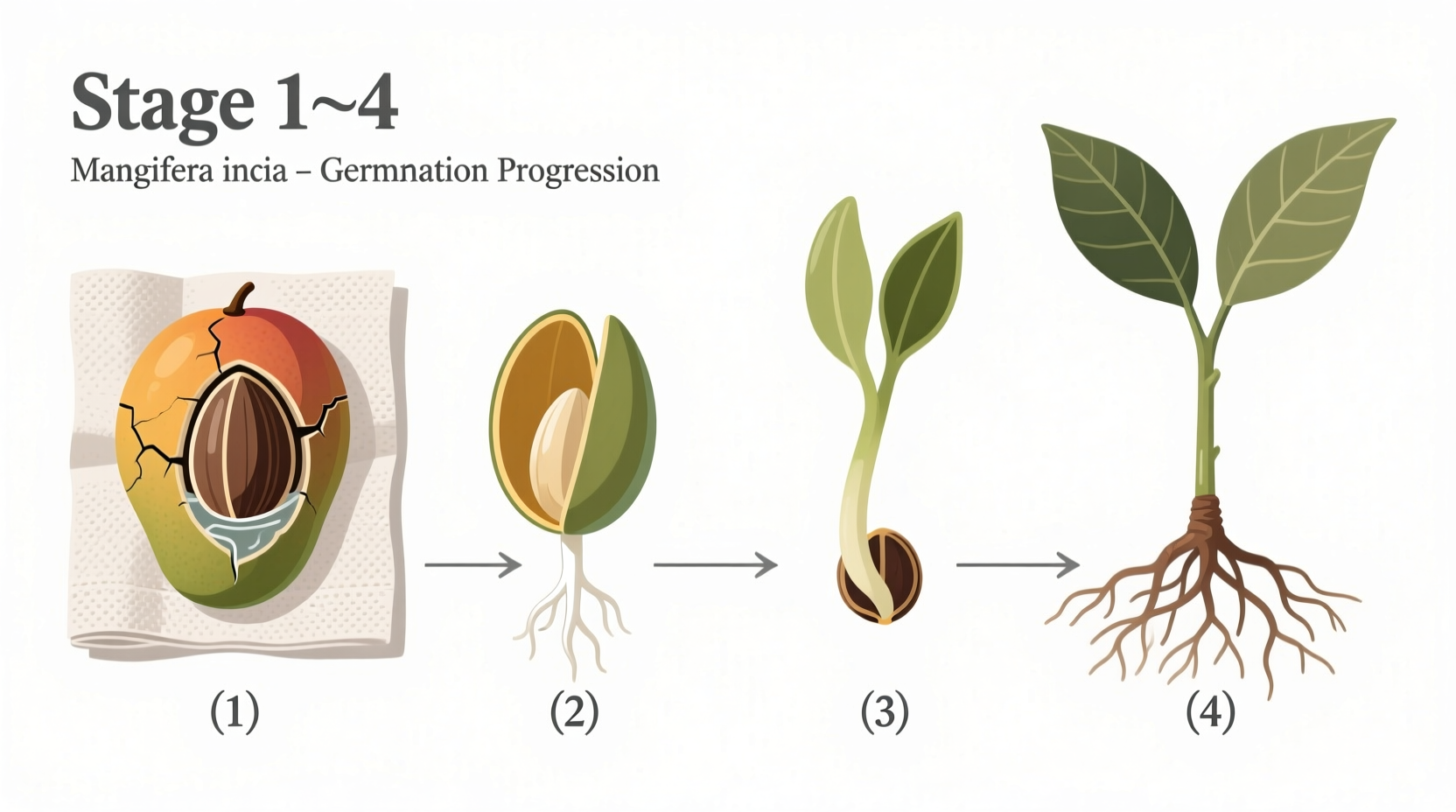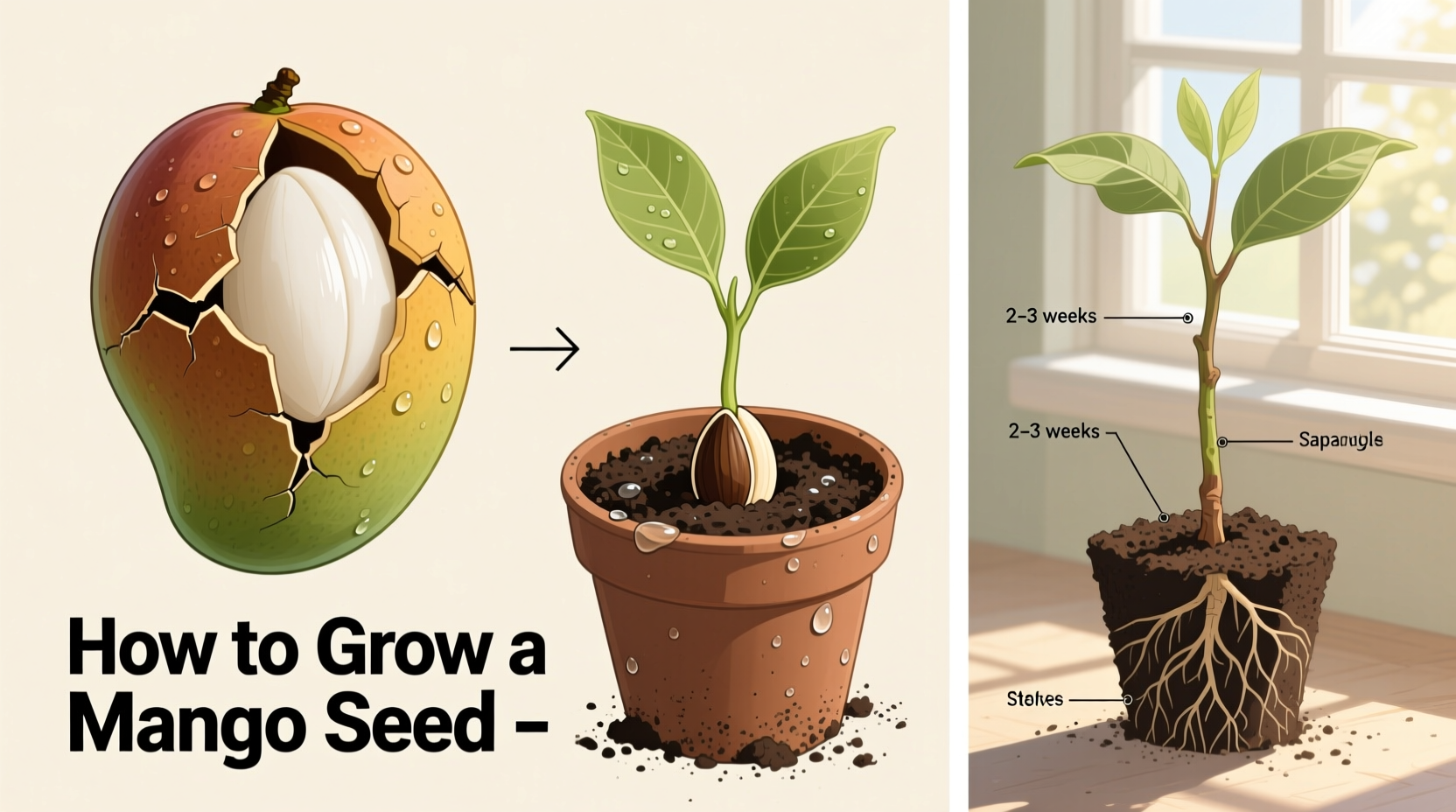Transform your grocery store mango into a lush, fruit-producing tree with these scientifically backed techniques. Growing mango from seed isn't just possible - it's surprisingly simple when you understand the seed's natural germination cycle and provide the right growing conditions. This complete guide reveals the exact process used by tropical horticulturists, including critical timing windows, soil composition ratios, and common mistakes that prevent successful growth.
Why Growing Mango from Seed Works (When Done Right)
Mango seeds contain all genetic information needed to produce a fruit-bearing tree, though it takes patience. Unlike grafted commercial varieties, seed-grown trees develop deeper root systems that enhance drought tolerance. The University of Florida's Tropical Research and Education Center confirms that properly germinated mango seeds have 85-90% viability when following specific moisture and temperature protocols.

Essential Materials Checklist
Before starting, gather these five critical items:
- Fresh, undamaged mango seed (never dried)
- Peat-based potting mix with 30% perlite
- 8-10 inch pot with drainage holes
- Thermometer for monitoring soil temperature
- Grow light or south-facing window
Step 1: Selecting the Perfect Seed
Your success begins with seed selection. Choose seeds from fully ripe, unrefrigerated mangoes - preferably varieties known for good flavor like Kent or Keitt. Avoid seeds from grocery store mangoes treated with irradiation (common for Indian imports), as these won't germinate. The USDA Agricultural Research Service notes that seeds from tree-ripened fruit have 40% higher germination rates than those from prematurely harvested fruit.
Step 2: Proper Seed Preparation Technique
Unlike many seeds, mango seeds require careful shell removal:
- Gently crack the hard outer shell using nutcrackers
- Remove the inner seed without damaging the embryo
- Soak in room-temperature water for 24 hours
- Discard any seeds that float (indicates poor viability)
| Germination Method | Success Rate | Time to Sprout | Best For |
|---|---|---|---|
| Direct planting | 65-70% | 3-5 weeks | Warm climates (75°F+) |
| Paper towel method | 85-90% | 2-3 weeks | All environments |
| Water soaking | 50-60% | 4-6 weeks | Beginners |
Step 3: Optimal Germination Process
The paper towel method delivers the most reliable results:
- Moisten paper towel (not dripping wet)
- Place seed flat side down on towel
- Fold towel over seed
- Place in sealed plastic bag
- Maintain 75-85°F temperature
- Check daily for mold or dryness
According to Cornell University's horticulture department, maintaining consistent 80°F temperatures during germination increases sprouting success by 35% compared to room temperature attempts.
Step 4: Planting Your Sprouted Seed
When roots reach 1-2 inches:
- Fill pot with pre-moistened potting mix
- Create 2-inch deep hole
- Place seed with root pointing down
- Cover with 1 inch of soil
- Water thoroughly but avoid saturation
Planting depth is critical - too shallow causes drying, too deep prevents sprouting. The Royal Horticultural Society recommends planting depth equal to twice the seed's diameter for optimal results.
Step 5: Creating Ideal Growing Conditions
Mango seedlings need specific environmental conditions:
- Temperature: Maintain 75-85°F (use heat mat if needed)
- Light: 6-8 hours of direct sunlight daily
- Water: Keep soil moist but not soggy
- Humidity: 50-70% minimum (use pebble tray)
These requirements change as your tree matures. In the first 6 months, seedlings need consistent warmth. After 1 year, they can tolerate brief temperature drops to 50°F.
Step 6: Timeline for Growth Expectations
Understanding the growth timeline prevents premature disappointment:
- Weeks 1-3: Germination occurs (paper towel method)
- Month 1: First leaves emerge after planting
- Months 2-4: Steady leaf production and stem thickening
- Year 1: Tree reaches 2-3 feet tall
- Years 2-3: First flowering possible
- Years 3-5: Fruit production begins
Remember that seed-grown mango trees take longer to fruit than grafted varieties. The University of California's Cooperative Extension confirms that while grafted trees may fruit in 2-3 years, seed-grown trees typically require 5-8 years before producing quality fruit.
Step 7: Troubleshooting Common Problems
Address these frequent issues promptly:
- Yellow leaves: Usually indicates overwatering - let soil dry slightly between waterings
- No growth: Check soil temperature - below 70°F significantly slows growth
- Leaf drop: Sudden environmental changes - maintain consistent conditions
- Mold on soil: Reduce watering frequency and improve air circulation
Geographic Considerations for Mango Growth
Mango trees thrive in USDA zones 9-11, but can grow in containers elsewhere. The American Society for Horticultural Science notes that container-grown mangoes in cooler climates require specific winter protection:
- Zones 4-8: Must bring indoors before first frost
- Zones 9-10: May survive outdoors with frost protection
- Zone 11: Can grow year-round outdoors
Container growing requires repotting every 2-3 years into progressively larger pots. Use a well-draining mix specifically formulated for tropical plants to prevent root rot.
When to Expect Your First Mango Harvest
Patience pays off with seed-grown mangoes. While commercial growers use grafting for earlier fruiting, your seed-grown tree will develop stronger disease resistance. The first flowers typically appear when the tree reaches 6-8 feet tall. Initial fruit may differ from the parent mango due to genetic variation - this is normal! The National Mango Board reports that first fruits are often smaller and less flavorful, improving with subsequent seasons.











 浙公网安备
33010002000092号
浙公网安备
33010002000092号 浙B2-20120091-4
浙B2-20120091-4